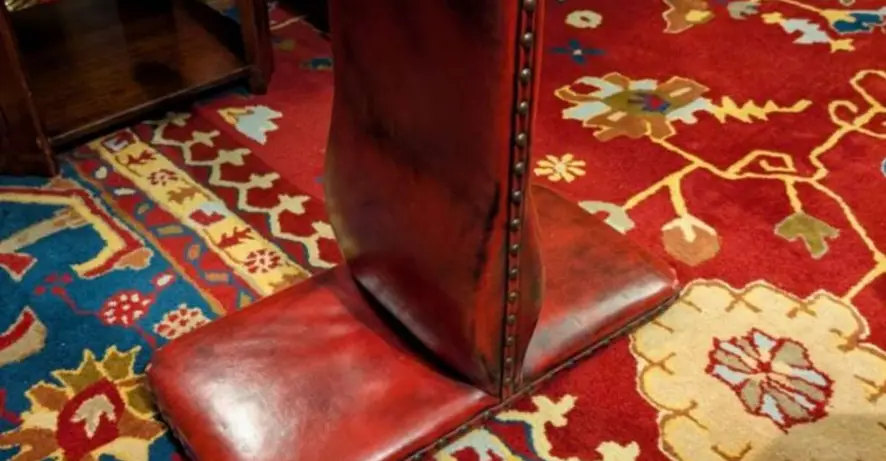One rainy afternoon I was jigging along and poking my nose in and out of this store and that. Total maze. Dusty shelves crammed with all manner of things from rusted lanterns to suspicious-looking porcelain dolls which surely come to life at night. I love places like that. They’re time machines that you don’t have to get into.
I saw this bizarre piece of furniture in the corner. Looked a little like a footstool…but in fine design form. Leather top looking worn like an old glove. Broken, carved wooden legs, which had obviously seen its better millennia. It had vibes. I stooped to take a closer look and inquired of the woman behind the counter: “Hey, what’s this fancy foot thing?”
She didn’t even look up. “Oh, that’s a gout stool.”
A gout stool. That caught me off guard.
So, What the Heck Is a Gout Stool?
A gout stool is pretty much just what it sounds like — a stool for people with gout. In the 1700s and 1800s, gout was a common ailment of the moneyed classes. It came from indulgence — red meat, fine wine, sugary desserts. Mostly it was just gratuitous, extravagant living.
The onset of gout meant your foot would swell and throb — particularly the big toe. You weren’t able to walk without pain. That’s where the gout stool arrived. It raised the foot to ease pressure and pain! Minimalist work, done up like a new car.

Created for Pain, Made for the Grip
These weren’t just stools. They were statements. Carved wood, leather or velvet cushions, even drawer space for ointments. Practical? Sure. But also decorative.
These stood with pride in studies or parlors. Not tucked away. And the goal was style as much as comfort. Even pain came with flair.
Think of a Victorian gentleman sitting back in a leather chair, brandy in one hand, newspaper in the other. His foot is raised on a gout stool. Pain and poise, side by side.
Pain as a Status Symbol
Gout was seen as a status symbol of wealth. If your diet gave you gout, it had also meant that you could afford the best (as well as the worst) of everything. The gout stool was not only a device for propping you up, but proof that you had lived well.
So when company came over, that stool served a purpose other than to prop up a foot. It murmured: “I deserve this suffering.”

Where’d They All Go?
Once medicine caught up, gout was controllable. Diets improved. Treatments worked. By the early 1900s the gout stool died out.
Now, they’re rare finds. You may find one at antique shops and museums. They are appreciated for workmanship and for quirks, not for swollen feet anymore.
Why I’m Unaccountably Fixated on Gout Stools Now
The stool, at first glance, is just a stool. Look closer, and it’s a look at how people lived — how they combined comfort with class, even in discomfort.
I bought the one I found. Couldn’t resist. It now lives in my living room. Magazines, and occasionally a cat. But whenever I look at it, I think of the lives it has seen. Somebody once rested on it, usually in distress — but proud.
If you come across one of these peculiar little relics, pause for a moment and take it in. The gout stool is a reminder that even pain used to have a design sensibility.

